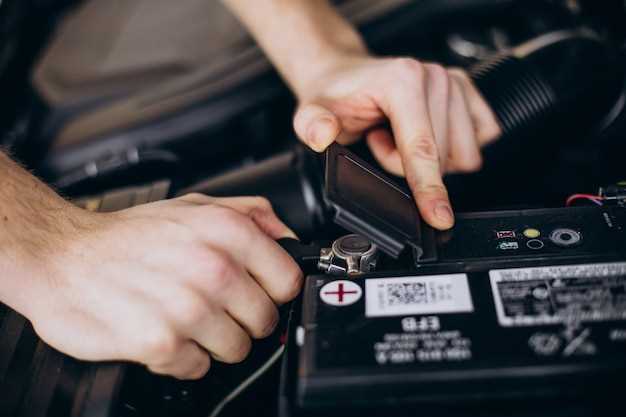
Maintaining the health of your hybrid vehicle’s battery is essential for ensuring its longevity and optimal performance. Hybrid batteries, while designed to endure longer than traditional batteries, can still degrade over time if not properly cared for. Adopting a few simple maintenance tips can significantly extend the lifespan of your hybrid battery and enhance your vehicle’s efficiency.
Regular maintenance is key to protecting your investment. Factors such as temperature extremes, driving habits, and battery management can all influence the overall health of your hybrid battery. By understanding these elements and following basic care practices, drivers can avoid premature battery replacements, which can be costly and inconvenient.
In this article, we will explore effective strategies to maintain your hybrid battery, ensuring it remains in peak condition. From monitoring battery levels to understanding the importance of regular usage, our straightforward tips will empower you to take charge of your vehicle’s battery health and enjoy a more reliable driving experience.
Optimize Charging Habits to Enhance Battery Longevity

Maintaining the health of your hybrid vehicle’s battery requires careful attention to charging habits. Proper management of these habits can significantly extend the lifespan of your battery, ensuring it operates at peak efficiency.
Avoid Frequent Full Charges: Frequent charging of the battery to its maximum capacity can lead to increased wear over time. Aim to keep your battery charge level between 20% and 80%. This practice reduces strain and helps maintain optimal performance.
Utilize Regenerative Braking: Many hybrid vehicles come equipped with regenerative braking systems that capture energy typically lost during braking. Make the most of this feature to naturally recharge your battery while driving, which can reduce dependency on external charging.
Charge at Optimal Times: Electric vehicle charging rates can vary based on demand. Charging your hybrid during off-peak hours can benefit both your wallet and your battery. It’s important to check your local utility’s rate plan to identify the best times for charging.
Monitor Battery Temperature: Extreme temperatures can adversely affect battery health. If possible, park your hybrid in shaded areas during hot weather and avoid exposing it to freezing conditions. Keeping the battery within a moderate temperature range enhances overall longevity.
Regular Maintenance Checks: Schedule routine maintenance for your hybrid vehicle, focusing on the battery system. Technicians can perform diagnostics to detect any potential issues early on, ensuring the battery is functioning correctly and efficiently.
By implementing these charging habits, you can effectively enhance the longevity of your hybrid battery. In turn, this will lead to a more reliable and cost-effective driving experience.
Monitor and Maintain Optimal Temperature for Hybrid Batteries

Proper temperature management is crucial for the longevity and performance of hybrid batteries. Extreme temperatures can lead to reduced efficiency, accelerated degradation, and ultimately, a shorter lifespan. Therefore, regular monitoring of battery temperature should be an integral part of your maintenance routine.
Hybrid batteries typically operate best at temperatures ranging from 20°C to 25°C (68°F to 77°F). When the temperature exceeds this range, the internal chemical reactions can become less efficient, leading to increased heating and potential overheating. Conversely, temperatures that are too low can impede performance and reduce the battery’s ability to hold a charge. Regularly check the battery’s status through your vehicle’s monitoring system, which provides realtime data on temperature.
To maintain an optimal operating environment, consider parking in shaded areas during hot weather or using reflective sunshades. In cold conditions, try to store the vehicle in a garage to avoid low-temperature stresses. Additionally, proper ventilation is essential, as ensuring airflow around the battery can help regulate its temperature.
Another important aspect is to avoid fast charging in extreme temperatures. Rapid charging generates additional heat, which can exacerbate temperature-related issues. Instead, opt for slower charging methods when high temperatures are present.
In summary, consistent monitoring and maintaining the optimal temperature for hybrid batteries will significantly enhance their performance and lifespan. Implementing these practices as part of your maintenance routine will contribute to a more efficient and reliable vehicle.
Conduct Regular Inspections and Cleanings of Battery Components
Regular inspections of hybrid battery components are crucial for maintaining optimal performance and extending lifespan. Begin by checking the battery casing for any visible signs of damage or corrosion. Look for cracks, bulges, or any leakage, as these can indicate serious issues that need immediate attention.
Next, inspect the terminal connections. Ensure that they are tight and free of corrosion, as loose or corroded connections can impede current flow and reduce the efficiency of your hybrid battery. Use a wire brush or battery cleaner to remove any buildup, and consider applying a thin layer of petroleum jelly to protect against future corrosion.
In addition to visual inspections, it is important to clean the battery components regularly. Dust, dirt, and debris can accumulate over time, potentially impacting the battery’s performance. A clean, dry cloth can be used to wipe down the surfaces, ensuring that air can circulate freely and heat can dissipate effectively.
During these maintenance checks, also assess the overall battery management system. Make sure that software updates are applied, if applicable, as these can enhance the battery’s performance and longevity. Monitoring battery health through diagnostics can help you identify any early signs of wear, allowing for timely interventions.
By conducting thorough inspections and cleanings of battery components, you can significantly prolong the life of your hybrid battery, ensuring reliable performance and efficiency for years to come.



